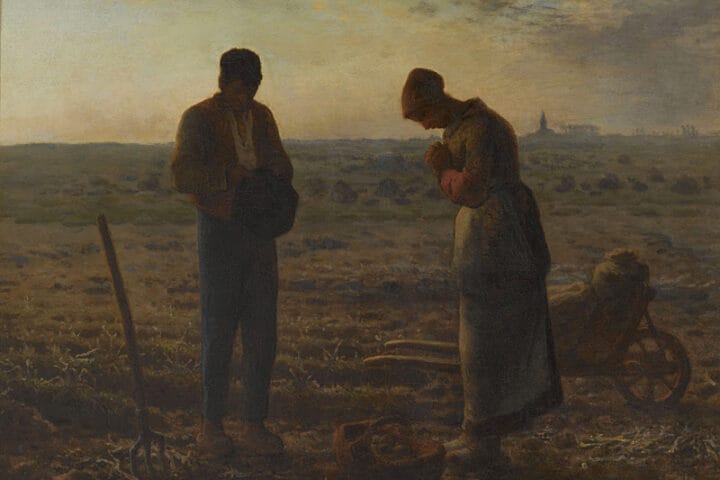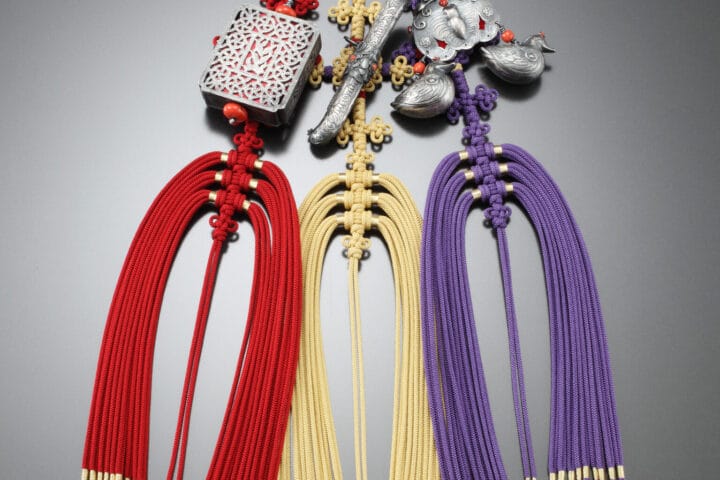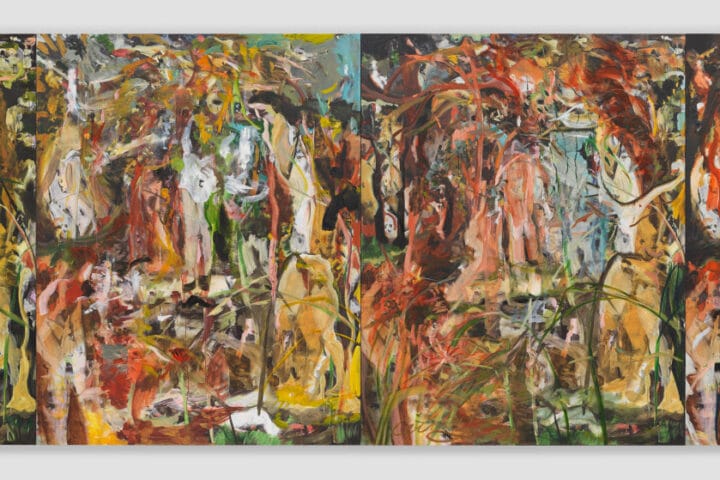Galería RGR, Mexico City, is pleased to present a solo exhibition of Julio Le Parc (b. Mendoza, Argentina, 1928) from September 22 through November 12, 2022. The exhibition includes new and seminal works across two-dimensional and three-dimensional pieces, showcasing the artist’s dedication to experimentation and research. It marks Julio Le Parc’s debut in a commercial gallery exhibition in Mexico.
Through his work, Le Parc sought the development and exploration of abstract visual languages. In Between Experimentation and Research, curated by Daniel Montero Fayad, five influential series Alchimie (1988 – 2022), Surface-Couleur (1959 – 2022), Continuels-Mobils (1960 – 2022), Lumière (1959 – 2022), and Déplacement (1963 – 2022) are on view. They study Le Parc’s experimentation with light and color relationships across complex canvas compositions and acrylic mobiles. In recent works, such as Alchimie 499 (2022), Le Parc continues his work into chromatic shapes, dots, and lines, interrogating color relationships, shown here alongside his signature suspended pieces of steel and plexiglass. Viewed together at Galería RGR, each series reveals the exploration of light fields, movement, and perception, which combine to formalize Le Parc’s status as a leading experimental artist and foreground the impact of his practice on the development of contemporary art.
Montero Fayad writes, “Much more than any geometrism, kineticism, or abstractionism, Le Parc’s work operates as a technological device by relating objects, spaces, and subjects in a specific moment of perception. He demonstrates that art, as technology, is located between the social and the individual, the local and the global, space and time, the singular and the multiple, the visual and the corporeal, and between the artist and the spectator. Suspending the viewer’s sense of identity, the experience of the works emphasizes the relational logic it seeks to produce.”
Ricardo Gonzalez, Founder and Artistic Director of Galería RGR, comments, “To host such an important international contemporary artist for his first gallery show in Mexico City is an honor; across new and seminal works, we look forward to showcasing the artist’s important legacy to local and international audiences.”
The exhibition will be accompanied by a catalogue written by Daniel Montero Fayad.

About Julio Le Parc
Julio Le Parc (Mendoza, Argentina, 1928) is one of the most renowned figures in the field of research and experimental visual arts, focused on both modern op-art and kinetic art, whose influence spans from the mid-20th century to the present. He studied at the National University of the Arts in Argentina, where he was first interested in the relationships between light and form. Immersed in the radical environment of the student movements of his native country, between 1955 and 1958, he participated in the occupations of the Academy of Fine Arts and the reformulation of its programs, oriented by the proposals of avant-garde artists such as the “Arte-Concreto-Invención” movement and where he met the influential art critic Jorge Romero Brest.
In 1958 he traveled to Paris after receiving a scholarship from the French Cultural Service, where he met artists such as Victor Vasarely and other important representatives ofKinetic art. From them, Le Parc extracted not only its formal proposals regarding movement but also its political implications to articulate aesthetic experiences without the need of previous knowledge or any sort of familiarity with the art world. Such implications derived into collective practices of the “Groupe de Recherche d’Art Visuel” (GRAV), of which he was a founding member, guided by a rejection of the position of art in capitalism. The collective emphasized anonymity and the participation of spectators through the application of industrial, mechanical, and kinetic techniques alike.
Afterward, he participated in the “Atelier Populaire” during May 68 in France, as well as in various avant-garde, radical publications, anchoring his production – always close to Kineticism – in a social and political commitment that conceives spectators no longer as participants in the work, but as co-authors of it.
Julio Le Parc currently lives and works in Paris, France.
About the Curator
Daniel Montero Fayad is a researcher at the Instituto de Investigaciones Estéticas at UNAM and holds a PhD in Art History from the Universidad Nacional Autónoma de México. He has taught at higher education institutions such as UNAM and the National University of Colombia. He has participated in different curatorial, cultural promotion, and educational projects in Colombia and Mexico. He was the academic curator of the MUAC.
In addition, he has published reviews and texts in academic, specialized, and dissemination magazines, as well as in catalogs of Colombian, Mexican, and North American contemporary art. His work aims to understand the role of art within the context of politics and economics in globalization and neoliberalism. He currently works with two lines of research: history of art criticism and criticism and history of painting in Mexico and the United States. He is the author of the book El cubo de Rubik: arte mexicano en los años noventa.
About Galería RGR
Galería RGR was founded by Ricardo Gonzalez in Venezuela in 2012 before moving to its current location in Mexico City in 2018. The gallery champions both established and emergent contemporary artists from across the globe, whose practices and research point toward the distinct futures offered by abstractionism.
Covering 260 sq m, the gallery space is located in the San Miguel Chapultepec neighborhood, in a building previously used as the editorial offices of Mexico’s youth magazine, ERES (1988-2012). Using abstract art as a guiding thread, the gallery unites various artistic fields and lines of thought. Having begun with the representation of key Venezuelan artists of the modern-contemporary art juncture, such as Carlos Cruz-Diez and Jesús Rafael Soto, the gallery’s evolution has meant a continuous search for fruitful intersections between the present and the near past, expanding beyond geographical limits.
Through its exhibition program, Galería RGR creates critical dialogues around international contemporary art production, mainly exploring abstraction as the base language, from its roots in the modernist painters and sculptors of the mid-20th century to the most innovative multidisciplinary proposals of our times. Exhibitions include seminal solo shows with artists Carlos Cruz-Diez (2018) and Oswaldo Vigas (2019), marking the latter’s first-ever solo show in Mexico. The gallery’s international program represents artists from America, Europe, and Asia; they hosted the first Latin American solo shows for artists, including Jeppe Hein (2021) and Ding Yi (2022).










